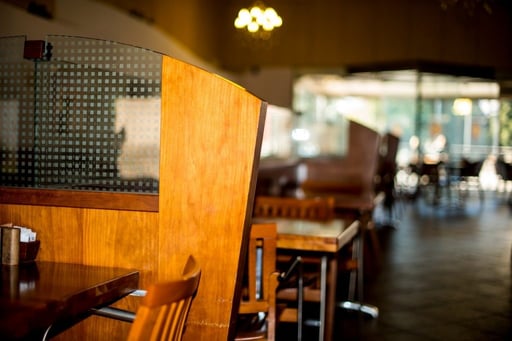As states across the U.S. are working to flatten the curve, many businesses are impacted by COVID-19 closures as a result of “stay at home” or “shelter in place” orders to limit human interaction and prevent the virus’s spread.
Additionally, many companies across the country have opted to temporarily close facilities to prevent employees from contracting the disease. With these shutdowns, it can become increasingly difficult to determine the condition of a facility and repair any issues that could be developing while the facility is unoccupied.

Damage to Unoccupied Buildings
Consider these scenarios that could arise in an unoccupied facility…
- A building in the coastal region may experience high humidity that is going unnoticed, which can in turn lead to mold growth. Imagine if the facility is a retail store; the end-result might mean thousands of dollars of damaged, unsalvageable clothing merchandise.
- If indoor moisture levels drop too low — perhaps in a cooler climate that is shifting from winter to spring temps — it could lead to wood warping. For instance, the frames of wood windows can shrink in size, making them more difficult to open and potentially creating gaps that let in more cold, dry air.
- Low indoor moisture can also lead to peeling or separated wallpaper, or cracked paint on plaster walls. What would you do if you come back to your facility, only to realize you need to bring in professional painting or remodeling services?
- Think about a restaurant or bar. There may be hundreds (or thousands) of dollars of liquor or wine in stock, going untouched through the COVID-19 crisis. Corked bottles of wine are not exempt from the effects of dry indoor air. Extremely low humidity levels can slowly chip away at a cork, leaving room for air to get into the bottle and ruin the flavor. The ideal humidity level for wine storage is 60%.
- Another thought for a restaurant facility: A humid environment allows mold growth to fester. The COVID-19 shutdowns came on suddenly for many facilities. Did kitchen staff have adequate time to scrub walk-ins, pots, and pans? Were grease traps thoroughly degreased? These are potential breeding grounds for mold during non-occupation.
- Contemplate multi-purpose facilities, such as an apartment complex with retail or dining space on the first floor. Completely shutting down HVAC airflow to the unoccupied businesses could lead to uneven air flow and temperature throughout the larger building.
The bottom line: Scenarios like the ones above will go unnoticed and unrepaired until employees return to the facility to find the damage caused by an unoccupied month.
Preventing Facility Damage During COVID-19 Closures
While these issues may seem frightful, thankfully many state governments have kept issues like this in mind when mandating shelter-in-place orders. Seeing the value and necessity of essential services, many states are allowing skilled trades such as HVAC technicians to continue working. During quarantine, let these technicians be the eyes and ears at the facility to ensure that, when business returns, critical issues didn’t develop, delaying reopening.
In addition, this downtime can also be the ideal occasion to have technicians visit the facility to address any known issues or to perform preventive maintenance. Maybe there is a repair the facility manager has been putting off because its fix requires closing a typically busy corridor or lobby area. By addressing this work now while the facility is shut down, managers can limit future downtime, employee inconvenience, and lost profit.
And as a preventative measure for the duration of this closure or in preparation of future closures, consider installing sensors to remotely monitor a facility’s indoor air quality levels through relative humidity, temperature, building pressure, and CO2 checks. A system like Melink Corporation’s PositiV® building health monitor can remotely track and trend building health, plus send alerts to the facility owner or manager when the system detects measurements outside its set parameters. While a facility may not have this in place to combat the current COVID-19 closures, it can be installed now to prepare for future unplanned closures or even a vacation (Facility managers need a break at some point, right?!).
